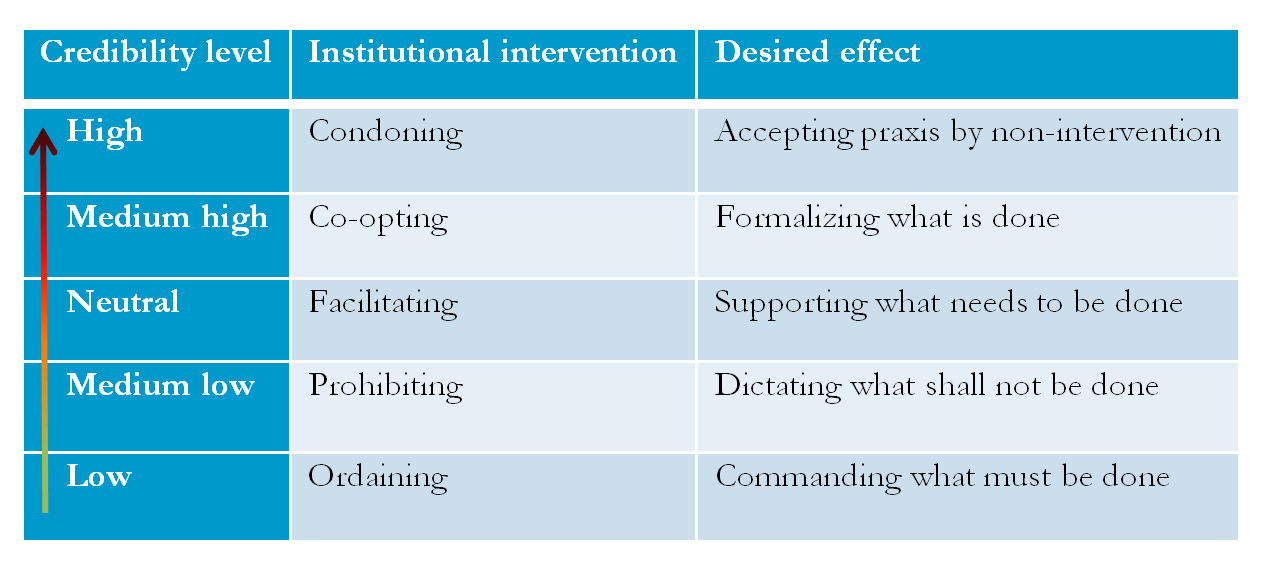As credibility increases, intervention prescriptions lessen, indicating that for higher levels of institutional credibility the appropriate policy measures should range from co-opting (i.e. formalizing what is already practiced) to condoning (i.e. accepting daily praxis with a ‘hands-off’ approach) (Arvanitidis and Papagiannitsis, 2020: 4)
The Credibility Thesis has demonstrated that functionally incongruent interventions (i.e. when a new institution’s function mismatches with that of an existing one) tend to fail (see, e.g. Wang and Liu, 2022; Zeković et al., 2020; Zhang, 2018; Pils, 2018). This raises questions: What can be done to avoid such a situation, or to remedy it? The answer to such questions lies in choice.
The Credibility Scales and Intervention Checklist or CSI Checklist elucidates these choices.
Aim: the CSI Checklists assesses or helps predicting the success (and failure) of institutional interventions and policies.
Assumption: The CSI Checklist posits that credibility is not binary, but a scale or continuum varying between credible and non-credible, with positioned in-between, the empty institution (proclaimed, not enforced). Davy (2018: 855) described the credibility continuum as “some stakeholders think about formality and informality as a dichotomy… Others rather think of a continuum with different degrees of (in)formality which need to exist simultaneously.”
Approach: While credibility can be assessed via, Institutional Archaeology, FAT or CAM analysis, the CSI checklist relates credibility scales with policy options. While the former may differ (or shift) from high to low, the latter ranges from interventionist (ordaining/prohibiting) to non-interventionist (condoning, co-opting or facilitating).
Application: examples of how the CSI Checklist can be applied include studies on Land Value Capture and finance (Pérez-Moreno, 2024), Payment for Ecosystem Services (Fan et al. 2022), urban common property (Arvanitidis and Papagiannitsis, 2020), and informal housing and settlements (Sun and Ho, 2018).
